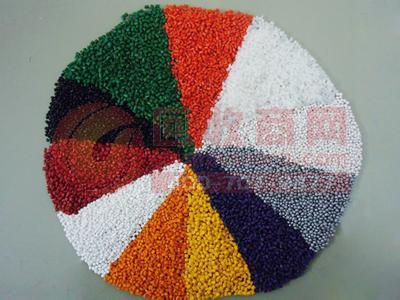
For the coloring materials used for masterbatch, the masterbatch must pay attention to the matching relationship between the colorant and the plastic raw materials and additives. The selection points are as follows.
(1) The coloring material cannot react with the resin and various auxiliary agents, and has strong solvent resistance, small mobility, and good heat resistance. That is to say, the masterbatch cannot participate in various chemical reactions. If carbon black can control the curing reaction of polyester plastic, carbon black can not be added to the polyester.
Masterbatch technology Because plastic molding products have higher processing temperatures, the colorants should not decompose and discolor under the molding heating temperature conditions.
Generally, inorganic pigments have good heat resistance, and organic pigments and dyes have poor heat resistance, which should be paid enough attention when selecting colorant varieties.
(2) The dispersibility and coloring power of the colorant should be good. When the color material is unevenly dispersed, it will affect the appearance performance of the product; when the coloring power of the color material is poor, the amount of color material will increase and the material cost will increase. The dispersibility and tinting strength of the same colorant in different resins are not the same, so you should pay attention to this when selecting the colorant.
The particle size of the colorant is also related to the dispersibility. The smaller the particle size, the better the dispersibility and the strong coloring power. The masterbatch technology process is very strict, and the commonly used masterbatch technology is a wet process. The masterbatch is made by aqueous phase grinding, phase inversion, water washing, drying and granulation. Only the quality of the product can be guaranteed.
In addition, while the pigment is being processed, a series of masterbatch techniques should be tested, such as determining the fineness of the sanding slurry, measuring the diffusion properties of the sanding slurry, determining the solid content of the sanding slurry, and measuring the fineness of the colorant. project.
There are four methods for the masterbatch technology process:
(1) Masterbatch technology Process ink method: As the name implies, it is a production method of using ink color paste in the production of masterbatch, that is, a three-roll mill is used to coat a surface of the pigment with a low molecular protective layer. The ground fine color paste is then mixed with a carrier resin, then plasticized by a two-roll mill (also called a two-roll mill), and finally granulated by a single-screw or twin-screw extruder.
(2) Masterbatch technology Process: The pigment, water and dispersant are sanded to make the pigment particles less than 1 μm, and the pigment is transferred to the oil phase by phase transfer method, and then dried to obtain a masterbatch. An organic solvent, as well as a corresponding solvent recovery unit, is required for phase inversion.
(3) Masterbatch technology Process kneading method: After blending the pigment and the oil carrier, the pigment is oleophilic, and the pigment is washed from the water phase into the oil phase by kneading. At the same time, the surface of the pigment is coated by an oil carrier to stabilize the dispersion of the pigment and prevent the pigment from agglomerating.
(4) Masterbatch technology process Metal soap method: after the pigment is ground, the particle size reaches about 1μm, and the soap liquid is added at a certain temperature, so that the surface layer of each pigment particle is evenly wetted by the soap liquid to form a layer. The saponification liquid, when the metal salt solution is added, chemically reacts with the saponified layer on the surface of the pigment to form a protective layer of metal soap (magnesium stearate), so that the finely divided pigment particles do not cause flocculation. And protect a certain degree of fineness.
White Pp Rod,Natural Pp Bar,Natural Pp Rod,Virgin Pp Rod
Ningbo Zero Engineering Plastics Co.,Ltd , https://www.zero-peek.com